Winter is coming. These are our words: five flies. That's all I'm giving you for the next 3 months. No dries. Sure, there might be some olives on January 26th when the mercury tips out at a balmy 46. But those trout are lethargic and don't want to spend the energy to rise. So, here you go. Tie some, buy some, steal them from your buddy's box when he's not looking. These are the flies that'll get you through the tough times when your guides are icy, your knuckles are bleeding and you’re really wondering if standing in 42 degree water when it's 23 outside is a wise life choice.
The Zebra Midge
Black and silver. None of that olive or red nonsense. Black and silver. If you’re nymphing with more than one fly (and you should be) this is the one on top. Big fish, little fish, red fish, blue fish: every fish eats a midge larva. Sink it down low or get frisky and try it unweighted and just below the surface.
The Frenchie
I know people that hate this fly and refuse to fish it, but not because it doesn't work — because it works so well. They find it unfair. Personally, I like to catch fish. I bet you do to. Tie some up on jig hooks with tungsten heads, put it below that zebra midge as a point fly and go for the gold.
Walt’s Worm
The first time I saw this fly I thought it was a joke. It might be the most boring looking piece of crap fly ever created. Dressed with no bead or no hot spot it actually looks like a little turd. But I'll be damned if the fish don’t go nuts over it. It's kind of a sow bug/cress bug/crane fly larva/caddis/pellet looking thing and just about every trout stream has one or two of those things floating around in it. Maybe trout like eating turds. What do I know?

The Glo-Bug
Yep. It's an egg. It's bright orange or yellow or pink or blue or whatever form of obnoxious you want. Those brownies and brookies are spawning in the late fall and winter and eggs are all over. Trout are not going to pass up a quick protein blast if it floats past them. Rainbow trout are particularly fond of them, especially the dumb stocked ones, but I bet you can get a wild brown fish to eat if you drop it on their nose.
The Pheasant Tail
This is the one to have if you only had one and not five. Tie some with bead heads, some sparse, some plump, some more traditional or however you like to tie them. Small. Dark. Mayfly. Nymph. Go size 14-18. I usually start with a 16 and see what happens. Tie some in 6s and 10s and you’ve got a stonefly. If I had to bet, I'd say more trout have been caught on this fly than any other pattern ever. Maybe.
So there you have it. These are the patterns that’ll get you over that seasonal depression. The ones that will work when you’re freezing your tail off. The flies that will work in 99% of trout water in both hemispheres during winter’s icy grasp.





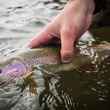





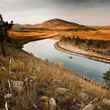
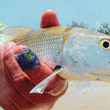



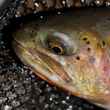
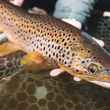



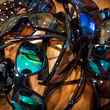




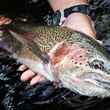
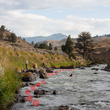

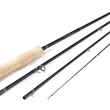
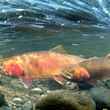
Comments
Kyle Smith replied on Permalink
Funny, my top 5 contains none of these, and probably no better or worse. Anybody who scoffs at this list, the point (to me at least) is keep it simple and maximize your chances of catching something. Tie simple rigs to avoid tangles and keep your flies in the water. Fish water you know, and fish close to your car in case you take a spill.
Andrew replied on Permalink
This was a good one, I agree the black zebra midge is the most effective out of all the colors, although small reds have worked for me when nothing else will on spring creeks. For PA, this list is legit, although one more fly I would have added would be the irrefutable, Greenie Weenie.
KG replied on Permalink
Eggs and worms and all of a sudden you can smell the desperation...
Jim Rauch replied on Permalink
Nice list, I have 4 out of 5, no Walt's Worm. I have caught trout on zebra midge and pheasant tail, but will keep trying.
backcountrychronicles replied on Permalink
That's not a turd, that is pure gold. We use a sow bug very similar to Walt's Worm. Very effective if presented properly and for that I suggest a bounce rig.
Ryan replied on Permalink
Walt's Worm, like the Pheasant Tail nymph, is simply a Frank Sawyer "Killer Bug" fly, or variant at least of what FS tied a generation or 2 before us. His Killer Bug fly was brought over to the States and became popular through Lee Wulff: their generation popularized, and therefore spread throughout much of the fly tying and fishing communities then and now, many mainstay flies, or "classics." A look into the history of flies is always educational as to which of these "classic" flies have performed well in order to stand the test of time, various regions and fish, and also the test of being adapted by later generations.
Kerry replied on Permalink
Where I live in Catalonia, the hatches are just starting. Time to put away our nymphs and tie on CDC baetis, although a tandem - the term they use here for dry dropper - with a PT can be awesome. Good calls on your North American subsurface selection, though. I’ve fished the old fashioned hare’s ears and never the Walt’s worm, but can’t remember seasonality. I tend to like scuds and red chironomids, too.
Pages